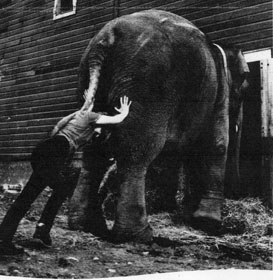System Leadership
 If you’re a Superintendent, CEO, or other system leader, Sabu feels your pain.
If you’re a Superintendent, CEO, or other system leader, Sabu feels your pain.
Why does “leading” a total system have to be so hard?
For a different way of thinking about it see “Kids, horses, teachers, …and other living things” at Monty Roberts and Natural Learning.
You may be familiar with Monty Roberts because of his revolutionary work with horses, but today he spends much his time doing teacher and leadership training for schools, and management training for business and industry.
Possibly because of the novel and movie by the name, many people refer to him as a “horse whisperer.” But note that the actual title of this book refers to a Horse LISTENER — “The Man Who Listens to Horses.”
Some things to consider about the relevance of his way-of-thinking to your work :
• The difference between “talking” and “listening” is the real power of what Roberts’ work means for all of us who attempt to influence behaviors of living systems. How much of teaching and leading is “talking” and how much is “listening?” Think of the teachers who most influenced you. Was it the content they delivered or what they seemed to understand about you? And how are the two “teaching/leading skills” connected?
• Note that the key to Roberts’ success as a “teacher” was that first he listened and found out what the horses could tell him about how they learned. Roberts’ knew he was always dealing with a “whole horse” — that had a mind of its own. And because he had figured out its learning process, he knew “what it wanted“or needed.
By going with the flow of the process already pre-wired in the brain he proved that changed behaviors can be effective, sustainable, and accomplished in far less time (from three-months down to 30 minutes) than any of the traditional way’s people have used to teach [or “break”] horses.
• How does his Join-up process –(first engage, and establish trust; then use that trust to interact; and out of this interaction begin to develop an intrinsically-driven relationship that is the support of all “work” that may follow) — compare to what you know about effective teaching, coaching and leading?
• How does his “simple” logic of starting with the learner you have (and its already embedded learning structure), reinforcing it, and using that capacity to develop what you don’t have relate to the beliefs and strategies underlying other effective approaches to individual and organizational improvement?
For instance, what seems to be similar about “developmentally-appropriate education” for children, “Appreciative Inquiry” for organizations,” and Assets-based Community Development?”
• How does this approach to intrinsically-driven change relate to the “change” goal of continual improvement?
Posted: June 9th, 2009 under Understanding the System.

